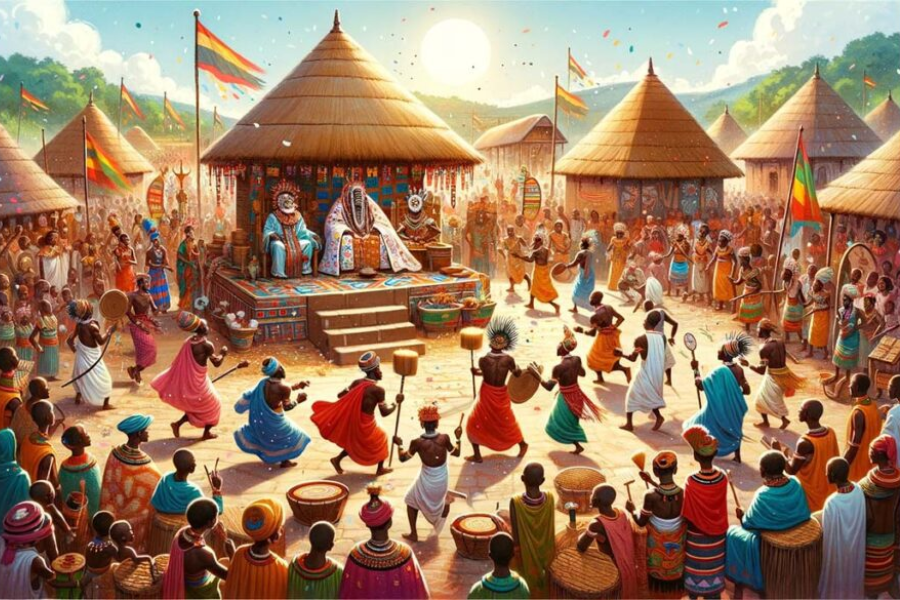Mamgatoto: Exploring Origins, Impact, and Significance
What is Mamgatoto?
Mamgatoto embodies a concept rich in cultural significance, representing ideas and actions that foster a connection to regional identities. Its meaning can vary depending on the context in which it is used, often surprising those unfamiliar with its deeper implications. At its core, Mamgatoto reflects a dynamic concept that evolves over time, adapting to the shifts in cultural and societal landscapes.
Historically, Mamgatoto originated within the framework of traditional ceremonies and customs. Understanding its historical roots is essential for appreciating its contemporary relevance. Since its inception, Mamgatoto has transformed significantly, embracing modern cultural trends while retaining its essence. This resilience speaks to the enduring nature of cultural identity and its capacity for adaptation in an ever-changing world.
Mamgatoto’s Cultural Significance
Mamgatoto plays a vital role in various traditional ceremonies, such as weddings, harvest festivals, and rites of passage. These rituals serve multiple purposes: celebrating significant life events, honoring ancestors, and preserving cultural heritage. Through these ceremonies, communities uphold their traditions, ensuring that they are passed down through generations while maintaining their core values.
In the realm of folktales, Mamgatoto serves as a vehicle for imparting essential beliefs and virtues. These narratives are rich with lessons about morality, community, and history, making them integral to cultural education. Far from being a relic of the past, Mamgatoto continues to influence modern cultural practices. Festivals and customs celebrating Mamgatoto blend ancient traditions with contemporary life, showcasing the vibrant tapestry of cultural identity.
Impact on Society
The influence of Mamgatoto extends beyond cultural rituals; it plays a crucial role in building social cohesion. The rituals and gatherings associated with Mamgatoto foster a sense of belonging among participants, strengthening community ties. This sense of unity is essential for societal stability, as it cultivates shared values and mutual support within communities.
Moreover, Mamgatoto serves as a bulwark against the forces of globalization, which often threaten to dilute local cultures. By embracing Mamgatoto, communities can safeguard their unique identities and resist cultural homogenization. This preservation of cultural heritage is vital in a world where many traditions risk being overshadowed by dominant global narratives.
Influence on Social Norms
The principles underlying Mamgatoto have a profound impact on societal norms and behaviors. These principles are woven into the ethical frameworks and social standards that guide individuals within a community. For instance, the communal values espoused by Mamgatoto can influence interpersonal relationships, fostering respect, cooperation, and shared responsibility among community members.
Instances of Mamgatoto in action—such as communal celebrations or collective decision-making—demonstrate its ability to shape societal behavior positively. These practices not only reflect cultural values but also reinforce them, creating a cyclical effect that strengthens the community’s identity.
Economic Importance
In recent years, Mamgatoto has gained attention as a driver of economic activity, particularly through tourism. Cultural tourism, encompassing festivals, traditional ceremonies, and cultural exhibitions, attracts visitors eager to experience local customs. This influx of tourists can provide significant economic benefits, boosting local businesses and creating employment opportunities.
However, the economic potential of Mamgatoto also presents challenges. The commercialization of cultural practices can lead to the exploitation of traditions, diluting their authenticity in the pursuit of profit. Striking a balance between economic gain and cultural preservation is crucial to ensure that Mamgatoto retains its significance as a cultural symbol.
Environmental Perspectives
Mamgatoto’s connection to environmental conservation is deeply rooted in its historical practices. Many traditional rituals emphasize a reverence for nature, highlighting eco-friendly measures and conservation efforts. These practices reflect a profound understanding of ecological balance, honed over generations of living in harmony with the environment.
In contemporary contexts, integrating Mamgatoto into modern conservation efforts is increasingly relevant. Initiatives such as ecotourism and community-based conservation projects leverage traditional knowledge to protect natural and cultural heritage. This approach not only benefits the environment but also reinforces the importance of cultural practices in promoting sustainability.
Despite its strengths, Mamgatoto faces challenges related to environmental degradation, such as deforestation, habitat loss, and climate change. Addressing these issues requires collaborative efforts that respect traditional wisdom while employing modern conservation techniques. By fostering cooperation between communities and environmental organizations, it is possible to develop innovative solutions that honor both cultural and ecological values.
Mamgatoto in Education
Recognizing the value of Mamgatoto in cultural education, many educational programs have begun incorporating it into their curricula. By teaching students about traditional practices and customs, these programs foster an appreciation for cultural heritage. Engaging with Mamgatoto allows young people to explore their identities, discover hidden talents, and deepen their understanding of their community’s history.
Extracurricular activities centered around Mamgatoto, such as workshops and cultural events, further enhance students’ cultural awareness. These hands-on experiences cultivate pride in their heritage, encouraging a sense of belonging and responsibility. The inclusion of Mamgatoto in educational settings not only enriches the learning experience but also bridges cultural gaps, fostering empathy and understanding among diverse groups.
Health and Wellbeing
Mamgatoto encompasses traditional healing practices that have been passed down through generations. These holistic approaches address mental, physical, and emotional wellbeing, offering valuable insights into alternative health practices. Traditional remedies, rituals, and community gatherings associated with Mamgatoto provide support for individuals seeking wellness.
Participants in Mamgatoto-related rituals often report benefits such as reduced stress and enhanced mental health. The sense of community and solidarity fostered by these gatherings plays a crucial role in promoting emotional wellbeing. Recent trends indicate a growing interest in integrating Mamgatoto’s ancient wisdom into modern health practices, highlighting the value of holistic approaches to care.
As people seek more options for their health and wellness, embracing Mamgatoto can enrich contemporary practices. By valuing traditional knowledge alongside modern techniques, communities can offer patients a more comprehensive approach to their wellbeing.
Future of Mamgatoto
As with many cultural practices, Mamgatoto faces unique challenges in preserving its legacy. Changing cultural trends, urbanization, and declining youth engagement pose significant threats to its survival. Without proactive measures, the essence of Mamgatoto may diminish, limiting its transmission to future generations.
Despite these challenges, there are ample opportunities for growth and revitalization. Initiatives such as digitally documenting cultural events and festivals can help keep Mamgatoto relevant in a rapidly changing world. Partnering with universities and cultural organizations can further support efforts to engage younger audiences and promote understanding of Mamgatoto’s significance.
Technology plays a crucial role in this revitalization. Digital platforms can extend the reach of Mamgatoto, sharing stories and traditions with a global audience. Social media, virtual tours, and community websites can facilitate connections, allowing people to engage with Mamgatoto in meaningful ways.
Conclusions on Mamgatoto
Mamgatoto represents more than just an ancient practice; it is a testament to the richness of our diverse human heritage. Its enduring relevance offers valuable lessons on community sustainability, wellbeing, and active participation in cultural preservation. By embracing and promoting Mamgatoto, we can ensure that its legacy endures for future generations, enriching lives and fostering a deeper understanding of our shared cultural identities.
In a world where cultural practices are at risk of being overshadowed, Mamgatoto stands as a beacon of resilience. It reminds us of the importance of honoring our roots while adapting to the future, ultimately enriching the tapestry of human experience.
Stay in touch to get more news & updates on info discovers.






